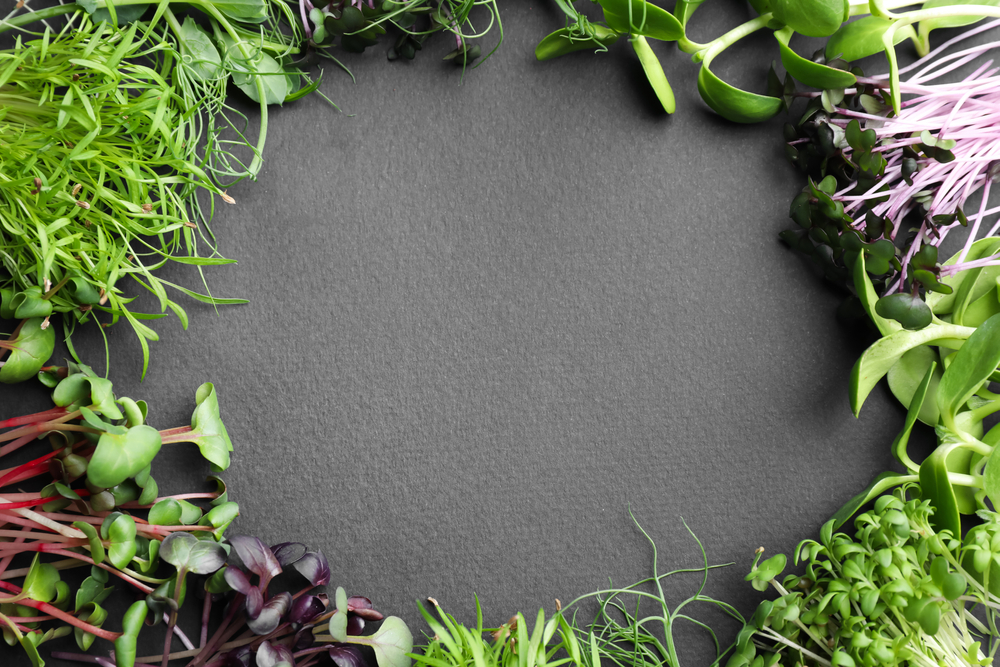Microgreens have been a culinary staple for some time, but their popularity has surged recently, thanks to their flavorful contribution as salad toppings or delightful accompaniments to dishes like avocado toast. It’s worth noting that microgreens are often confused with sprouts, but they are distinct entities.
According to Healthline, microgreens fall somewhere between sprouts and baby greens in terms of development. They are typically harvested shortly after they begin to grow leaves, usually within seven to 21 days following seed germination. This early stage of growth is what gives microgreens their unique flavor and nutritional profile.
Microgreens can be cultivated from a variety of seeds, with some of the most popular choices including radishes, broccoli, arugula, and even sunflowers.
These miniature greens not only offer a burst of flavor but also come with a plethora of health benefits. The specific advantages may vary depending on the type of seed used to produce the microgreens. However, a recent report from the Journal of Future Foods highlights some common health-promoting properties found in microgreens. These include their potential to possess anti-inflammatory, anti-cancer, and anti-bacterial properties.
While research on microgreen nutrition is ongoing, these tiny greens are gaining recognition for their nutrient density and potential health benefits. As their popularity grows, more insights into their nutritional value and health advantages are likely to emerge.
1) They contain plenty of plant compounds
Amy Goodson, MS, RD, CSSD, LD, an expert in sports nutrition and a member of the Medical Expert Board, highlights one significant advantage of incorporating more microgreens into your diet: their abundant antioxidants.
“Microgreens contain antioxidants, which play a vital role in combating diseases and illnesses by safeguarding your cells,” explains Goodson. “Research even indicates that they often have higher levels of antioxidant polyphenols compared to most fully matured greens.”
It’s important to note that the antioxidant content can vary depending on the type of seed used to grow the microgreens. For instance, as reported in Frontiers in Nutrition, broccoli microgreens tend to have elevated levels of various antioxidants and minerals compared to their fully grown counterparts. This suggests that the choice of seed can influence the nutritional composition of the microgreens you consume.
2) Some types may be a good source of potassium
Amy Goodson further emphasizes that various microgreens are rich in potassium, which can contribute to fulfilling your daily recommended potassium intake.
“One cup of microgreens supplies approximately 10-11% of your daily potassium requirements, earning them the designation of a ‘good source’ of potassium,” notes Goodson. She also points out that many Americans fall short of their potassium intake recommendations, making microgreens an excellent addition to your diet to help bridge this gap. Whether added to salads or omelets, incorporating a cup of microgreens can be an effective way to enhance your potassium intake.
3) Microgreens contain prebiotics
Microgreens offer yet another compelling reason to include them in your diet. They contain prebiotics, which are a type of dietary fiber that plays a crucial role in promoting gut health. Morgyn Clair, MS, RDN, a contributing author at Fit Healthy Momma, highlights this benefit.
“Many types of microgreens are rich in prebiotics, which support the growth of beneficial bacteria in the gut,” explains Clair. To maximize the intake of these nutrients, it’s advisable to consume microgreens in their raw form, either as a topping for meals or as an addition to salads. This can help enhance the health of your gut microbiome.
4) The also contain high levels of helpful plant pigments
Natural pigments found in various plants not only contribute to their vivid colors but also offer numerous health advantages. One example is carotenoids, which impart the orange and red hues to vegetables such as carrots and bell peppers. Carotenoids have been associated with benefits for eye health, cardiovascular health, and even a reduced risk of certain cancers.
A report in Foods underscores the presence of these beneficial pigments in microgreens. Microgreens contain high levels of pigments like carotenoids, as well as other common plant pigments like chlorophyll and anthocyanin. These pigments come with their own set of health benefits, making microgreens a nutritious addition to your diet.
5) They may contain trace metals
While microgreens are mainly beneficial to our overall health, there is one thing that researchers want us to be aware of. According to the Foods report, some microgreens have been found to have trace metals and potentially high amounts of nitrate in them.
The report states that the reasoning behind this has to do with the growing sites of many microgreens, like weeded farmlands, the bordered areas of roads or paths, and other areas with heavier human traffic, which often contain soil that is higher in nitrates.
This doesn’t mean you should avoid microgreens altogether, but it’s a necessary risk to be aware of.

